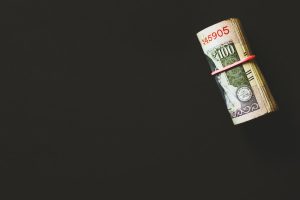Forex trading is a popular form of investment where traders buy and sell currencies with the goal of making a profit. One of the most important decisions a forex trader has to make is choosing the time frame that suits their trading strategy. The time frame refers to the duration of time a trader holds a position in the currency markets.
There are various time frames used in forex trading, ranging from short-term to long-term trading. The ideal time frame for forex trading depends on the trader’s goals, trading strategy, and risk tolerance. In this article, we will explore different time frames and their pros and cons to help traders make informed decisions.
Short-term trading
Short-term trading is also known as scalping or day trading. It involves holding a position for a few minutes to a few hours, with the aim of making quick profits from small price movements. Short-term traders use technical analysis to identify short-term price patterns and use them to enter and exit trades.
One of the advantages of short-term trading is that traders can make many trades in a day, which increases their chances of making a profit. However, short-term trading requires a lot of discipline, focus, and experience because the market can be volatile, and the trader must be able to make quick decisions.
Short-term trading also requires a high level of attention to market news and events that can cause sudden price changes. Traders must be able to manage their risk effectively and use stop-loss orders to protect their capital.
Medium-term trading
Medium-term trading involves holding a position for several days to a few weeks. Traders use both technical and fundamental analysis to identify trends and market conditions that can affect their trades. Medium-term traders aim to capture larger price movements than short-term traders.
One of the advantages of medium-term trading is that it allows traders to capture larger price movements while reducing their exposure to market volatility. Medium-term trading also requires less time and attention than short-term trading, which makes it suitable for traders who have other commitments.
However, medium-term trading requires a higher level of patience and discipline than short-term trading. Traders must be able to hold their positions for several days without getting emotional or impulsive. They must also be able to manage their risk and use stop-loss orders effectively.
Long-term trading
Long-term trading involves holding a position for several months to a few years. Traders use fundamental analysis to identify long-term market trends and economic conditions that can affect their trades. Long-term traders aim to capture significant price movements that occur over a long period.
One of the advantages of long-term trading is that it requires less time and attention than short-term and medium-term trading. Long-term traders can also benefit from the power of compounding, where profits are reinvested to generate more profits over time.
However, long-term trading requires a lot of patience and discipline because the market can be unpredictable, and the trader must be able to hold their position for a long time. Long-term trading also requires a higher level of risk management because the trader’s exposure to market volatility is higher.
Conclusion
Choosing the right time frame for forex trading depends on the trader’s goals, trading strategy, and risk tolerance. Short-term trading is suitable for traders who are willing to take on more risk and have the experience to make quick decisions. Medium-term trading is suitable for traders who want to capture larger price movements while reducing their exposure to market volatility.
Long-term trading is suitable for traders who want to benefit from the power of compounding and are willing to hold their positions for a long time. Whichever time frame a trader chooses, they must be able to manage their risk effectively and use stop-loss orders to protect their capital. Successful forex trading requires discipline, patience, and a deep understanding of market conditions and economic trends.





